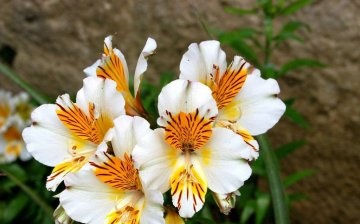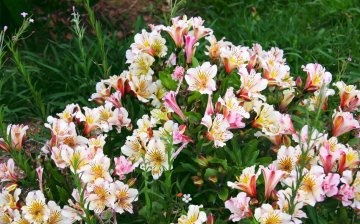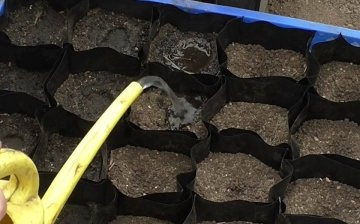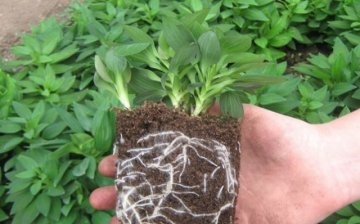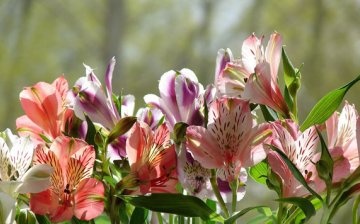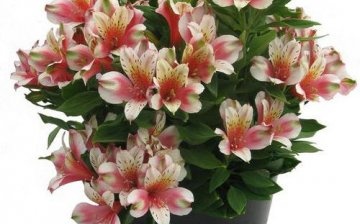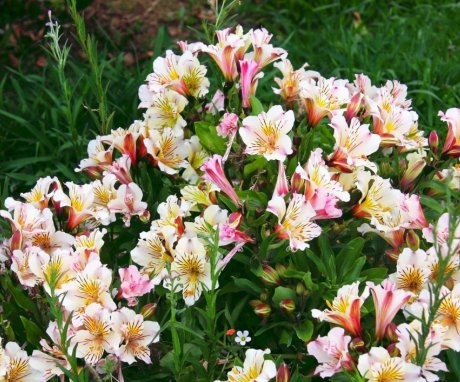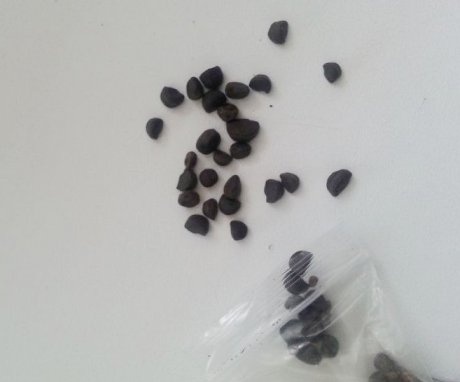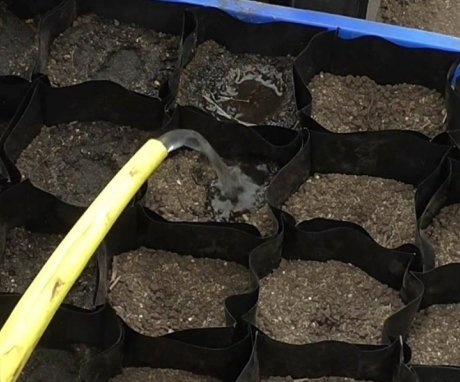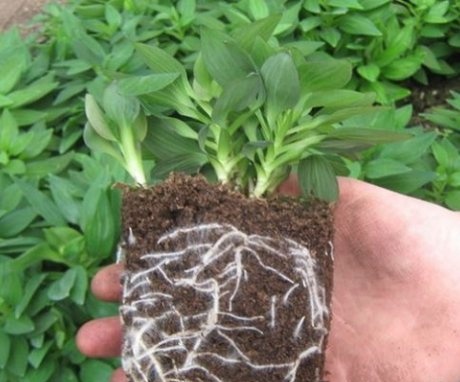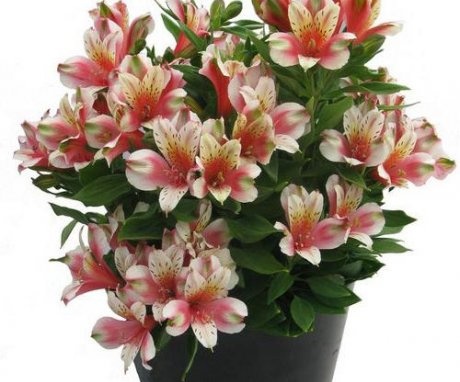Alstroemeria: growing from seeds in the open field and in a pot
The discovery of the American continent allowed the rest of the world to get acquainted with wonderful plants of exotic beauty. But they also demand that they be provided with certain growing conditions, knowledge of care. Alstroemeria is considered one of these plants.
There are ornamental plants that can be grown both at home and in the garden in flower beds. The perennial alstroemeria is so outwardly interesting that it will become a decoration of the house and the site, one has only to choose the appropriate plant varieties. It is interesting that the flower reproduces both by seeds and rhizomes. The first method is chosen in order to preserve the characteristic features of the selected variety.
Content:
- Description and features of the plant
- Is it possible to immediately plant seeds in open ground?
- How to grow seedlings?
- Terms and rules for transplanting seedlings into the ground
- Flower Care Tips
- Growing alstroemeria from seeds in a pot
Description and features of the plant
When discovering new plant species in South America, botanists often called them either by their own names or by the names of friends. So the name Alstroemeria appeared in honor of the scientist Alstroemer. This rhizome perennial plant has been revered by the Incas since ancient times, comparing it to the deity of the Sun.
The flower is similar in shape to a lily.
Its peculiarity is the different color of the petals. There are varieties with a golden, red, yellow tint. The petals are decorated with dark dots or stripes. Hybrids were bred with white and blue, purple and cream tones, multi-colored petals. The inflorescences of the plant are up to five centimeters in diameter. It appears on erect stems up to fifteen buds, opening in mid-June and pleasing with their beauty until August. Flowers are used for cutting in bouquets, where they remain fresh for a long time.
Perennial bushes reach a height from 80 centimeters to 1.5 meters. The structure of the green leaves of the plant is interesting: the plates are narrow and turned 180 degrees. The root of alstroemeria is similar to a spindle and reaches a length of fifteen centimeters. Despite its southern origin, alstroemeria loves moderate air temperatures, and some varieties tolerate lower temperatures well. Therefore, it is worth growing a flower in the garden.
Is it possible to immediately plant seeds in open ground?
Alstroemeria will become a true decoration of the suburban area, if you approach it correctly to its cultivation. For planting seeds directly into the ground, select plant varieties that tolerate frost well. These varieties include golden alstroemeria, which grows naturally in Peru. Suitable for the garden and hybrids that are resistant to low temperatures.
For planting a flower, places with diffused sunlight are chosen, although a perennial can grow in partial shade. The site should be with deciduous-sod land, loose, with good permeability to moisture and air. Soil acidity a plant needs neutral or slightly acidic.
Seeds before planting stratify, placed for a month in a cold and humid environment, and disinfected in a weak solution of potassium permanganate for 20 minutes.
At the end of April or the first decade of May, the seeds are buried one centimeter into the ground. By this time, the earth should warm up to 10 degrees Celsius, and the threat of night frosts should pass. It is important to maintain a distance of 30 centimeters between the holes. Immediately cover the planting with a film, airing daily.
If the planting is successful, then the plant will take root well, but it will bloom in the second or third year of life. When you want to speed up the appearance of flowers, then you need to grow alstroemeria seedlings.
How to grow seedlings?
Alstroemeria seeds are planted for seedlings in February so that the bushes transplanted into the ground have time to get stronger by winter. Perennials need nutritious and loose soil. Therefore, the previously disinfected container is filled with soil consisting of sod and leafy soil. To create greater permeability, either perlite or river sand is added to the soil mixture.
The drainage layer can be made 2-3 centimeters high, and the soil level should not reach the edge of the container. Seeds are laid out on the surface, slightly pressing inward. After that, the box is placed in a plastic bag and placed on the bottom shelf of the refrigerator for a month.
How to care for seedlings:
- It is necessary to air the plantings twice a day, removing condensation from the walls of the bag. Moisten the soil in the container moderately.
- After 30 days, the container with the planting material is taken out and placed on the windowsill in the room, creating a temperature of 20-25 degrees Celsius.
- Covering film is not removed, continuing to ventilate daily.
- Moisten as the top layer of the soil dries up, since excess watering will lead to stagnation of the liquid and decay of the plant roots.
- After 10–20 days, the first shoots of alstroemeria should appear. Then it's time to remove the film from the container.
When two or four true leaves appear, picking seedlingsby placing each seedling in a separate container. A plastic cup with a volume of 100-200 milliliters is suitable. Drainage holes are made in it, filled with expanded clay and an appropriate mixture of soil. After making a hole, place the seedlings in an individual container.
When alstroemeria seedlings are hardened, they will quickly take root in the ground. Of course, losses during cultivation in this way are natural, but there will be enough seedlings to decorate the garden plot.
Terms and rules for transplanting seedlings into the ground
After the soil warms up to 10-12 degrees Celsius, the ornamental plant is transplanted to the site. It should be sheltered from the wind and located on the sunny side of the garden. If the acidity of the soil is high, then it is preliminarily repaid by adding lime or dolomite flour.
For heavy soils, add humus or compost... Pits for each seedling are prepared at a distance of 25-30 centimeters from each other with a depth of 10 centimeters. Given the fragility of the seedling stem, planting is carried out carefully, trying not to damage the plant.
Alstroemeria grows well in open ground and in a greenhouse.
It is better to immediately mulch the plantings to retain moisture in the soil. The transplanted plants are first watered abundantly. But as it grows, the bushes should not be too waterlogged. Only when the layer of earth is dry at a depth of three to five centimeters, it is necessary to water Alstroemeria moderately. After transplanting into the ground, it remains to properly care for the perennial. In the second year after planting, the plant will bloom.
Flower Care Tips
When a decorative perennial has taken root, it is simple to take care of it:
- Alstroemeria is watered in moderation. Waterlogging, as well as drying out the soil, the more prolonged, will lead to the death of the plant.
- You can feed a perennial in the spring with mineral fertilizers, in the summer - as needed. Of the mineral complexes, those with phosphorus and potassium are chosen.Less nitrogen is needed, since the element contributes to the growth of green mass. And before flowering, the plant does not need nitrogenous fertilizers. It is better to water the bushes with a solution prepared from a tablespoon wood ash three liters of water.
- Loosening and weeding of alstroemeria bushes is mandatory.
- Tall bushes need a tie to the support.
- After the bushes have faded, the shoots are cut with shears, leaving 5-7 centimeters from the soil surface.
- In regions with cold winters, plantings are mulched with a thick layer of peat, covered with straw or spruce branches.
- You can dig up a plant for the winter. After slightly drying the roots, they are placed in containers with soil and placed in the basement for three months.
The wrong attitude to alstroemeria will lead to the fact that it will not bloom.
Growing alstroemeria from seeds in a pot
To grow an ornamental plant at home, you need to choose varieties that reach 40-80 centimeters in height. The seeds are first planted in a container with a nutrient substrate. If you want the plant to bloom faster, then it is better to plant the seeds in February. First, containers with planting material are placed in a cool room for 30-40 days, and then transferred to a warm one with a temperature of 20-23 degrees. Seedlings appear within a month. Heat is contraindicated for them. The optimum temperature should not exceed 18 degrees.
A caring attitude towards a perennial will bring joy, as the plant will repay with abundant flowering.
The appearance of four true leaves is a signal to transplant seedlings into a separate pot. Capacity requirements for alstroemeria are normal. It should have holes, drainage and loose nutrient soil. After transplanting, monitor the soil moisture in the container. Water for irrigation is taken at a settled and room temperature.
You can feed the plants, but not much. After the alstroemeria has faded, the shoots die off. The plant prepares for the dormant period. In winter, it does not need watering and feeding. It is enough to moisten the soil so that it does not dry out and the roots remain alive. In the spring, for transplanting alstroemeria, they select another container with a larger diameter and deeper, since the plant quickly fills the pot with its roots. The substrate is purchased in a store or prepared from leafy soil with the addition of one part of humus, peat, chopped pine bark and vermiculite.
More information can be found in the video:



